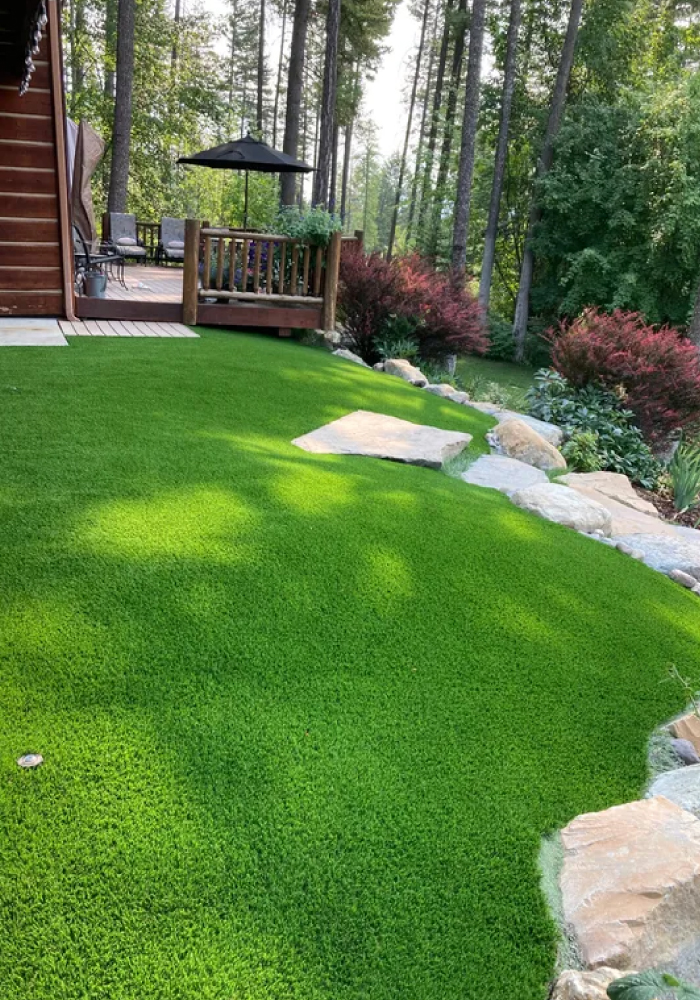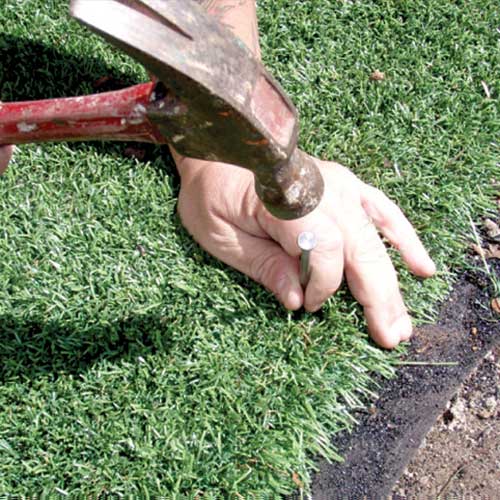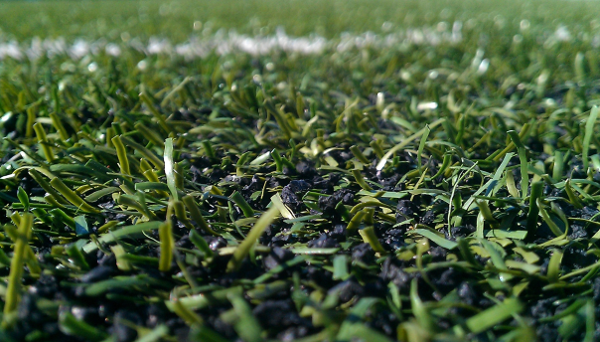Skilled Arizona Turf Installation Solutions for Residential and Business Use
Skilled Arizona Turf Installation Solutions for Residential and Business Use
Blog Article
See Why Homeowners Prefer Artificial Turf for Lasting Landscaping Practices
As homeowners significantly prioritize sustainability in landscaping, synthetic lawn has arised as an engaging alternative to standard grass. What stays to be discovered is the complete extent of benefits that man-made turf can provide to home owners and the environment alike.
Water Preservation Conveniences
One of the most substantial benefits of fabricated turf is its function in water preservation. In contrast, synthetic lawn removes this demand entirely, as it does not require watering.
In addition, the installment of synthetic grass can contribute to a more lasting landscape. Home owners can dramatically decrease their water expenses, enabling reallocation of resources to other environmental campaigns or family uses. Additionally, artificial lawn is developed to endure various weather conditions without the need for supplementary watering, making it an excellent selection for regions encountering water shortage.
The environmental advantages prolong past instant water savings. By minimizing water usage, artificial grass helps to minimize the effects of environment change, maintaining crucial communities that are endangered by extreme water removal. As sustainable landscape design techniques acquire traction, fabricated turf arises as a responsible option for property owners looking for to create green outdoor areas.
Reduced Maintenance Efforts
Synthetic grass substantially decreases upkeep initiatives contrasted to standard grass lawns. With fabricated grass, property owners can remove the taxing tasks related to all-natural landscape design, such as mowing, feeding, and weeding. This not only saves important time however also minimizes physical labor, making grass treatment accessible for individuals of any ages.
Among one of the most remarkable benefits is the lack of regular mowing. Traditional lawns require regular trimming to maintain a visually pleasing elevation, whereas synthetic grass continues to be continually lavish without the need for cutting. Additionally, property owners no longer need to apply fertilizers or chemicals, which are often required to keep natural turf healthy and balanced. This shift not only lightens the workload however additionally promotes a neater, a lot more uniform look year-round.
Additionally, synthetic lawn is durable and durable, calling for very little upkeep past occasional brushing and rinsing to get rid of debris. This convenience of maintenance permits house owners to enjoy their outside rooms without the continuous worry of upkeep, providing more time for recreation and family tasks. Eventually, the decreased upkeep efforts connected with artificial grass make it an enticing option for those looking for a low-maintenance, visually appealing landscape.

Ecological Impact Reduction
There is an expanding recognition of the ecological benefits connected with synthetic grass, particularly in regards to water conservation and minimized chemical use. Conventional grass require substantial amounts of water, particularly in drought-prone regions, leading to enhanced pressure on local water resources. In comparison, synthetic grass removes the demand for irrigation, substantially decreasing water usage and advertising sustainability.
Additionally, conventional yard upkeep commonly involves the application of chemicals, plant foods, and herbicides, which can contribute to soil and water contamination. Synthetic grass minimizes this ecological threat by requiring minimal upkeep and practically getting rid of the requirement for dangerous chemicals. This not just enhances soil health but also safeguards local environments from hazardous overflow.
In addition, the manufacturing of all-natural grass yards generally involves the use of nonrenewable fuel sources for trimming and landscaping tools, more adding to greenhouse gas discharges. By picking synthetic grass, homeowners can dramatically decrease their carbon impact related to lawn treatment tasks.
Visual Charm and Flexibility
In addition to its ecological advantages, synthetic grass supplies considerable visual allure and flexibility for landscape design. Home owners can achieve a rich, environment-friendly appearance year-round, getting rid of the seasonal variations commonly connected with all-natural yard. This consistent visual not only improves the aesthetic allure of a home yet additionally adds to a polished and well-maintained appearance.
Moreover, synthetic grass is offered in a range of navigate to this site structures, colors, and styles, enabling customization to suit specific choices and layout styles - Arizona artificial turf. Whether used in residential yards, industrial areas, or recreational locations, it can flawlessly incorporate into diverse landscaping layouts, from contemporary minimalist to lush exotic settings
The versatility of synthetic grass expands beyond mere look; it can be set up in various areas, including roofs, outdoor patios, and even indoor rooms, producing opportunities for one-of-a-kind landscaping solutions. In addition, it appropriates for a range of tasks, from children's play areas to pet-friendly atmospheres, providing capability without jeopardizing design.
Eventually, the visual appeal and convenience of synthetic grass make it an eye-catching choice for home owners seeking lasting landscaping solutions that do not give up beauty for ecological responsibility.

Long-Term Cost Financial Savings
One of the most engaging benefits of synthetic grass is its possibility for long-lasting price savings. Unlike all-natural turf, which calls for routine upkeep-- including mowing, watering, fertilizing, and parasite control-- man-made lawn substantially reduces these recurring expenses. Home owners can save a considerable quantity on water bills, particularly in areas where water deficiency is a pressing problem. The removal of yard treatment solutions even more adds to economic cost savings, as there is no need for specific tools or labor.
Furthermore, synthetic grass has a lifespan of 15 to 25 years, relying on its top quality and usage. This toughness decreases substitute prices, making it a more cost-effective option in the future. The preliminary investment in synthetic turf can often be recouped via the cost savings accumulated over time.
While the upfront price might seem greater contrasted to turf setup, the advancing savings from reduced upkeep and water usage often surpass these preliminary expenditures. Inevitably, the adoption of synthetic lawn not just promotes a lasting landscaping remedy however also provides property owners a financially smart option that straightens with long-term budgeting objectives.
Final Thought
Synthetic grass arises as a compelling choice for sustainable landscape design, offering substantial advantages in water preservation, reduced maintenance initiatives, and diminished ecological impact. Its aesthetic allure and adaptability boost the visual landscape while straightening with modern sustainability goals. Long-term expense savings add to its appearance for homeowners. As neighborhoods progressively focus on eco-friendly methods, the adoption of artificial grass stands for you could try these out a dynamic action toward accomplishing lasting and resistant landscapes.
In addition, fabricated lawn is created to hold up against numerous weather conditions without the need for supplemental watering, making it a perfect choice for regions encountering water deficiency. (Arizona artificial turf)

Artificial lawn emerges as an engaging choice for sustainable landscape design, providing substantial advantages in water preservation, reduced upkeep efforts, and lessened environmental influence.
Report this page